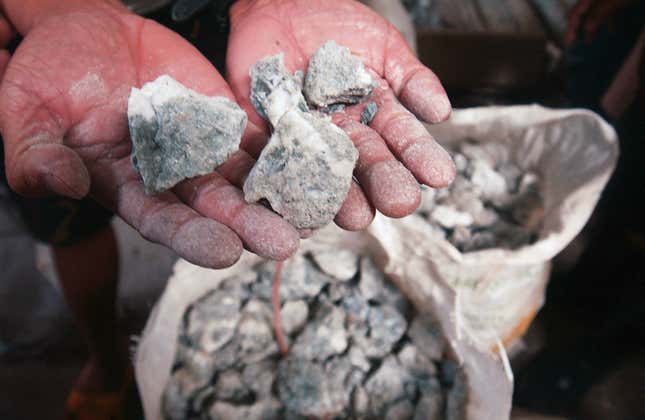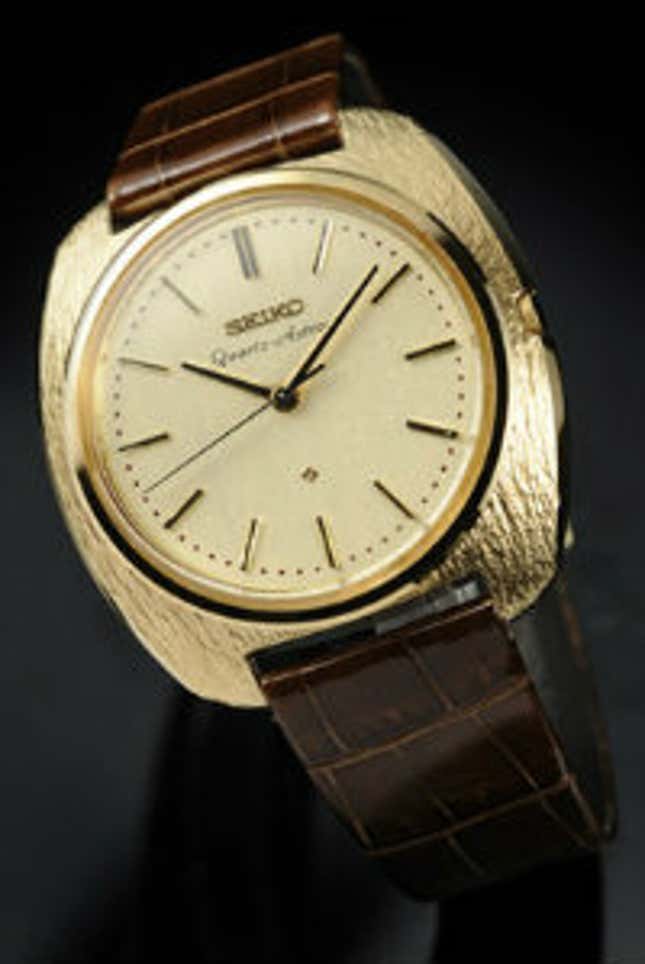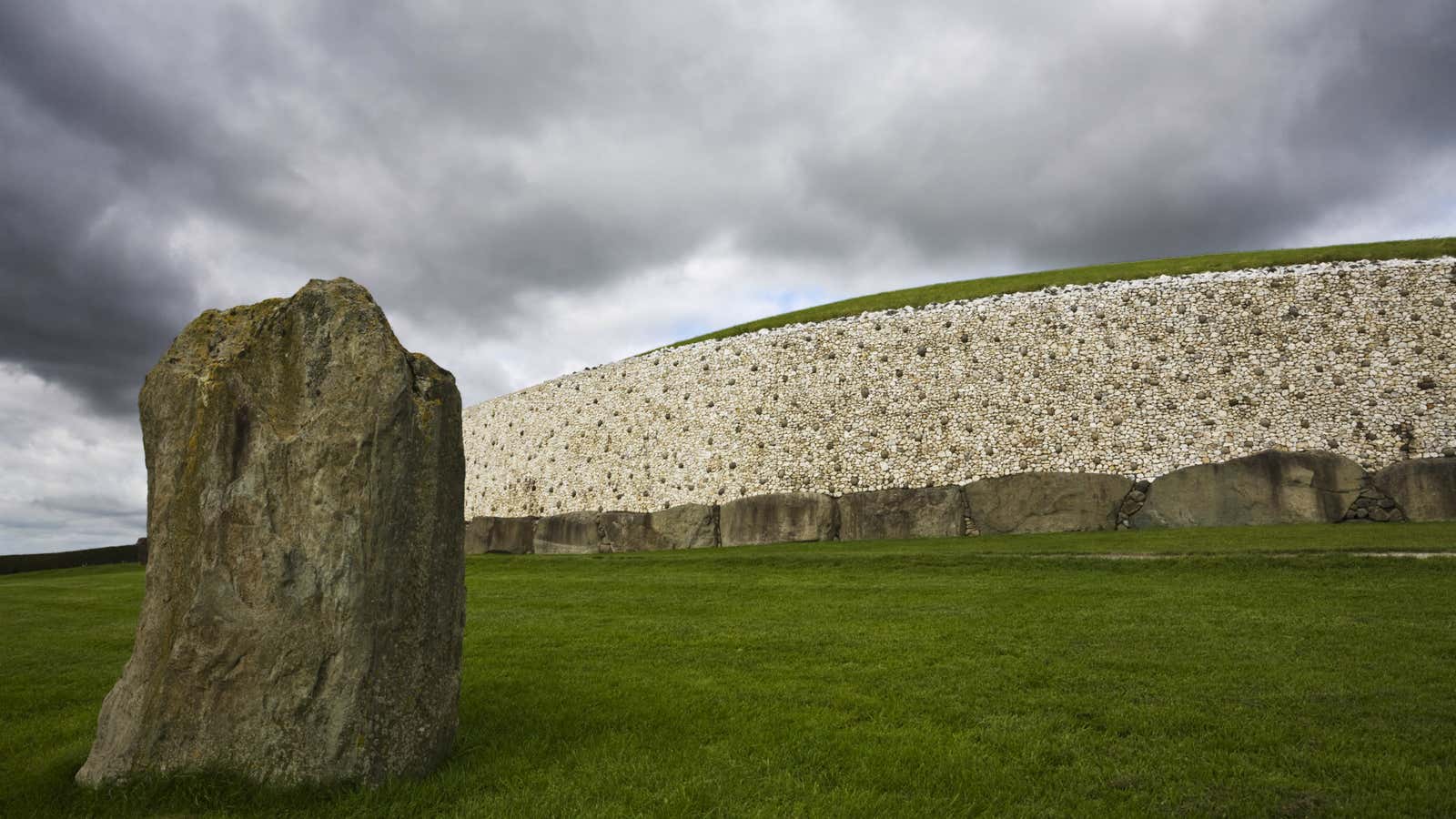One night in January, I dragged myself to a complimentary bar at one of the most important wristwatch fairs in the world, Salon International de la Haute Horlogerie (SIHH) in Geneva.
I was all talked out. My messenger bag heaved with press kits and my dictaphone had no space left to record. Still, I couldn’t help but notice the watch on the man sitting on the barstool next to mine. Scooping salmon tartare out of a small shot glass, I patiently waited for his cuff to withdraw enough to spot the brand name. (The niggling need to identify every watch at 15 paces is one of watch journalism’s many curses. Not being able to afford any of them is another.)
After a few minutes of neck-craning and squinting, I gave up and asked him.
“Oh this is not a major brand,” he said.
He pulled his sleeve back to reveal the face of a handsome watch with a cream dial on a golden bezel. The watch had a stopwatch function and a couple of smaller sub-dials inscribed within. A perfectly respectable timepiece, made by minor Swiss brand Louis Erard.
“I can afford a Louis Erard,” the man said a little sheepishly. “All these brands here are so expensive.”
And then with some relief: “At least it is not a quartz watch.”
Swiss companies make millions of quartz watches every year. Only Hong Kong and China make more. Last year, according to data from the Federation of the Swiss Watch Industry, quartz watches earned Swiss companies around 5 billion Swiss francs. If it weren’t for quartz, several Swiss brands would go out of business instantly.
Yet much of the industry hates talking about “quartz.” They avoid references to the material in product literature or product presentations. If they must, “quartz” always appears in the smallest possible font size, at the end of the watch’s feature list. Most of them see it as upstart technology that is inferior to the traditional mechanical Swiss movement.
This is a pity. Not only because quartz technology has democratized time-keeping at a scale never before seen in human history, but also because quartz is endlessly interesting.
But then the Swiss have some history with quartz. And so does everybody else.
Rock of the ages

Human history is often told in terms of the metals the species used at each stage of its development: copper, iron, steel, silicon.
Quartz is no different. Two-thirds of the earth’s crust is formed of a compound of silicon and oxygen. And a large proportion of this oxide of silicon exists in the form of quartz.
For millions of years, quartz sat in the crust waiting for an intelligent species to figure out what to do with it. Crystals of quartz waited patiently, slowly honing the two properties that would later bewitch prehistoric humans: brilliance and durability.
Quartz crystals were beautiful enough to be treated like gems, but durable enough to make hand tools with.
The prehistoric Irish did both.
Some 50 kilometres up north from Dublin, in the valley of the river Boyne is the Brú na Bóinne complex of Neolithic monuments. Spread out over an area of 780 hectares the UNESCO World Heritage Site is most famous for the spectacular and utterly mysterious 5,000-year old Newgrange monument.
Researchers and archaeologists are still not entirely sure what the Newgrange monument, shaped like an overgrown flying saucer, was used for. When I visited the site in July, one of the official tour guides explained that site could have been a tomb like many other monuments in the valley. An alternate theory is that Newgrange was a kind of place of worship.
For me, the most striking aspect of the monument is the restored front facade: an expanse of shimmering white quartz chunks studded with dull grey spheres of stone. Many archaeologists think that quartz was not used on the facade but was arranged on the ground outside the passage opening.
It is quite possible the Irish used their best quartz for Newgrange’s wall of light, but also used other varieties of quartz as tools to construct the monument. And so it would be for millennia of human-quartz relationships. The stone’s purpose straddled the earth-bound and mystic. Some varieties of quartz were even used as semi-precious stones.
Oddly, given its abundance and simple chemical composition, the constituents of quartz would remain a mystery for thousand of years. Many scientists even assumed that quartz was its own element.
In 1787, French scientist extraordinaire and future guillotine-victim Antoine Lavoisier was the first to suggest that silica, quartz in a crystalline form, may be the oxide of a hitherto unknown material. Nearly 40 years later, Swedish chemist Jons Jacob Berzelius isolated and named the element silicon, the metal of this age.
Seek quartz, it appears, and ye shall discover the future.
Eventually, quite suddenly, quartz began to yield its secrets. In 1880, brothers Jaques and Pierre Curie discovered a peculiar property of quartz that would give it vigorous new utility: piezoelectricity.
The brothers discovered that if certain crystals, particularly those of quartz and a compound called Rochelle salt, were subject to mechanical stresses they produced tiny amounts of electrical potential. The converse was also true. Apply a current, and the crystals deform slightly.
This discovery fundamentally changed the way several devices worked, and enabled the invention of many others. Quartz crystals found their way into devices such as sonars and phonographs.
But most significantly of all the piezoelectric properties of quartz: it would make timekeeipng devices easier to make and own than ever before, and bring the Swiss mechanical watchmaking industry to the very brink of annihilation.
Changing times
For more than two centuries, Switzerland was the center of the watchmaking world. Swiss watchmakers established design standards, nurtured innovation, pushed the limits of mechanical watchmaking and established the canonical functions and parts of the caliber—the ticking heart of a watch.
By the middle of the 19th century, prominent watchmakers such as Jaquet Droz and Vacheron Constantin already had sales and distribution offices as far away as in India and China. Indeed, many European luxury brands today owe their existence to past Asian patronage. Amin Jaffer, international director of Asian art at auction house Christie’s and author of several books on luxury consumption in pre-Independence India, once told me that if it wasn’t for the Indian market during the 1920s, names like Cartier and Louis Vuitton may well have died during the Great Depression.

And then, on Christmas Day in 1969, the sky fell down on the Swiss watch industry. In Tokyo, Seiko unveiled the Astron wristwatch (pictured left), the first quartz watch to be commercially produced and sold.
All watches, both mechanical and quartz, function using the same basic idea. They house an object that vibrates continuously at a regular rate. A mechanism takes these regular vibrations and then translates them into the ticking second-by-second motion you see on your watch face. In old grandfather clocks, the pendulum provides the regular motion. In mechanical wristwatches, made in the traditional Swiss way, the vibration is provided by a wheel mounted on a spiral spring that swings back and forth.
As long as the vibrating element does so regularly, the timepiece will keep good time.
Quartz, it turns out, is great at vibrating. A tiny tuning fork made of quartz vibrates several thousand times a second, because of the piezoelectric effect, when connected to the watch battery. Because of the same effect, the tuning fork also generates electric pulses at the same rate. The rest of your watch circuity detects these regular pulses and translates them into the movement of your watch hands.
The first quartz-based watch prototypes were designed in the 1920s. Subsequently, researchers in both Japan and Switzerland spent decades researching quartz mechanisms. The Japanese, however, were the first to create a system that could be replicated at an industrial scale.
Initially, the Swiss watch industry reacted to the Astron furtively. Even high-end brands such as Breitling launched quartz models. Indeed in the early days after the Astron’s release, some quartz models cost more than their traditional mechanical equivalents. This was justified by both the technological novelty of the system and the greater accuracy. Also it seemed inconceivable to the Swiss that wristwatches could become so cheap. A relatively cheap pocketwatch sold in the 1920s could cost around $50—around $550 in today’s money when adjusted for changes in the Consumer Price Index.
Unfortunately for the Swiss, their embrace of quartz was too little too late. They simply underestimated how quickly manufacturers in the far east would set up manufacturing plants that would churn thousands upon thousands of dirt-cheap quartz movements. Even today this price disparity is huge. The average watch exported from Hong Kong, in 2011, cost $15. The average Swiss watch cost $688.
The market for the much more expensive mechanical Swiss models saw the bottom fall out. According to one estimate published in WatchTime magazine in 2009, two-thirds of the 90,000 workers employed in the Swiss watch industry lost their jobs by 1988. Hundreds of brands shut down or sold out to larger firms. The subsequent decade would be one of unprecedented turmoil for the Swiss. And they still refer to it as the “Quartz Crisis.” Many Japanese, on the other hand, prefer to call it the “Quartz Revolution. “
Meanwhile international watch ownership boomed on the back of cheap quartz pieces.
The Quartz Crisis epitomizes how technological change transformed an industry almost instantaneously. In many ways it predates the way in which the internet has slaughtered print newspaper subscriptions and, more recently, the way tablets have cannibalized PC sales.
But the Swiss finally clawed their back to feasibility. By the end of the ‘80s, brands such as Swatch were carving their own niche in the quartz market. A revival was afoot.
In 2011, the Swiss watch industry exported 29.8 million pieces, an all-time record.
The bounce-back owes itself to a delicate balancing game. Affordable watches powered by quartz and basic machine-made mechanical movements bring in low margins but high volumes. Meanwhile expensive, high-end complicated wristwatches, many made entirely by hand, marketed like works of art, and released in small numbers sell for astronomical sums of money. Almost every major brand has at least one limited edition model that sells for half a million dollars or more.
The Swiss, however, haven’t forgiven quartz yet. In the halls and rooms at SIHH and BaselWorld (the other major fair held in Basel in early summer)—no one likes to say the ‘q word’ unless they absolutely have to. I once asked Olivier Bernheim, CEO of family-owned Swiss watchmaker Raymond Weil Genève, why his booth at BaselWorld made no reference to the brand’s Tango range of watches. “We sell a lot of Tangos,” he said, “but here in Basel we don’t want to talk about them. Nobody talks about those models here.”
If Swiss law allowed them to spit on the floor every time they said “quartz,” they probably would.
But they can’t deny this: In the beginning, there was quartz. And then quartz was both tool and treasure. Then it helped in the discovery of silicon. Later still, it made precise time-keeping accessible like never before in human history.
Every time we’ve learnt something new about quartz, it has had a material impact in the way we live our lives.
What will we learn about quartz next? (Besides the fact that it makes a rather splendid name for a website.)
Only time will tell.
